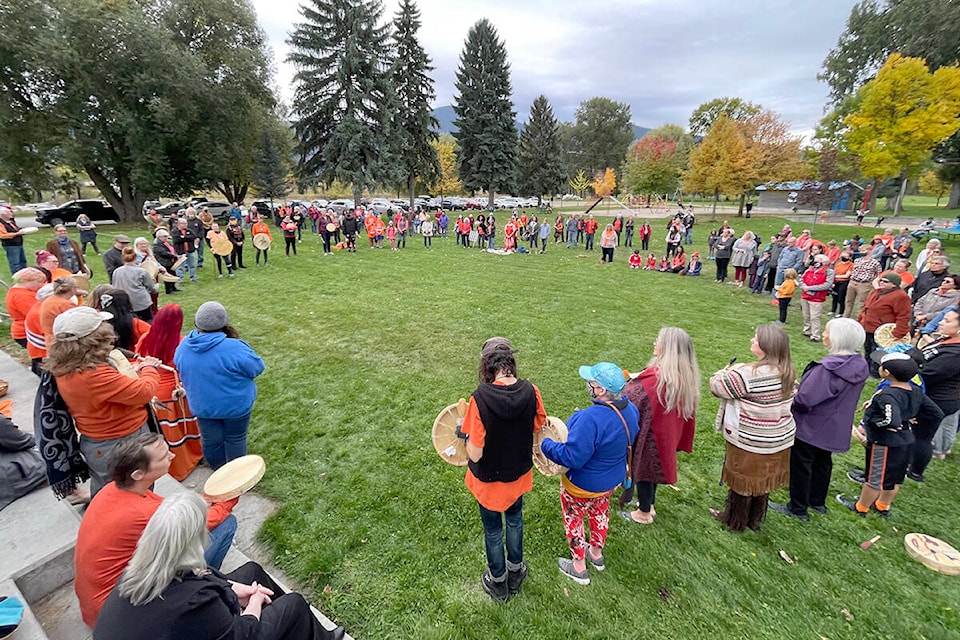Editor’s note: The story below may trigger difficult or traumatic thoughts and memories. The Indian Residential School Survivors Society’s 24-hour crisis line is available at 1-866-925-4419.
Drums and singing rang out at 2:15 p.m. in City Park on Thursday, Sept. 30, marking Grand Forks’ first observance of the National Day for Truth and Reconciliation.
Around 100 people gathered in a large circle facing their hosts from the Boundary All Nations Aboriginal Council (BANAC). Among the Indigenous and Métis women who led Thursday’s songs, most wore orange shirts. So did many in the crowd.
VIDEO: First Nations, Métis elders lead drum circle at Gyro Park
READ MORE: Grand Forks sees commemorative walk, Canada Day parade

Sept. 30 was declared a federal statutory holiday this spring after the Tk’emlups te Secwépemc First Nation confirmed the discovery of 215 unmarked graves at the Kamloops Indian Residential School. Similar discoveries have since been made at former residential schools across Canada, every grave belonging to an Indigenous child forcibly taken from their families and made to attend schools, most run by organized churches, where they were forbidden from expressing their cultures.
Addressing the crowd, BANAC’s Victoria Runge stressed that Thursday’s ceremony was meant to honour the Tk’emlups te Secwépemc. It was not a celebration.
And Sept. 30, is so much more than a paid holiday, she explained, adding that it’s not a holiday at all, much less a paid one, for Indigenous people living on B.C. streets.

Calling on people not to shed idle tears, Runge went on to encourage anyone who might not understand the significance to learn and acknowledge the history of the residential school system.
When BANAC hosts opened the circle for others to speak, Area D Director Danna O’Donnell drew on the words of a First Nations Chief who’d given her sage advice.
“I learned it’s not the time to ask what I can do right now, but to participate in events like these and to listen: When the time comes, and I’m asked to take action, I’ll do what I can to do meaningful things,” she said.
In years past, Sept. 30 was observed as Orange Shirt Day. On that day, people wear orange shirts in memory of the Northern Secwpemc (Shuswap) FN’s Phyllis Webstad, who was unceremoniously stripped of her cherished orange shirt — a gift from her grandmother — when she started at a residential school in Mission, B.C.
This happened to Webstad in 1973, according to the website orangeshirtday.org.
@ltritsch1
laurie.tritschler@grandforksgazette.ca
Like us on Facebook and follow us on Twitter.
laurie.tritschler@boundarycreektimes.com
Like us on Facebook and follow us on Twitter.
